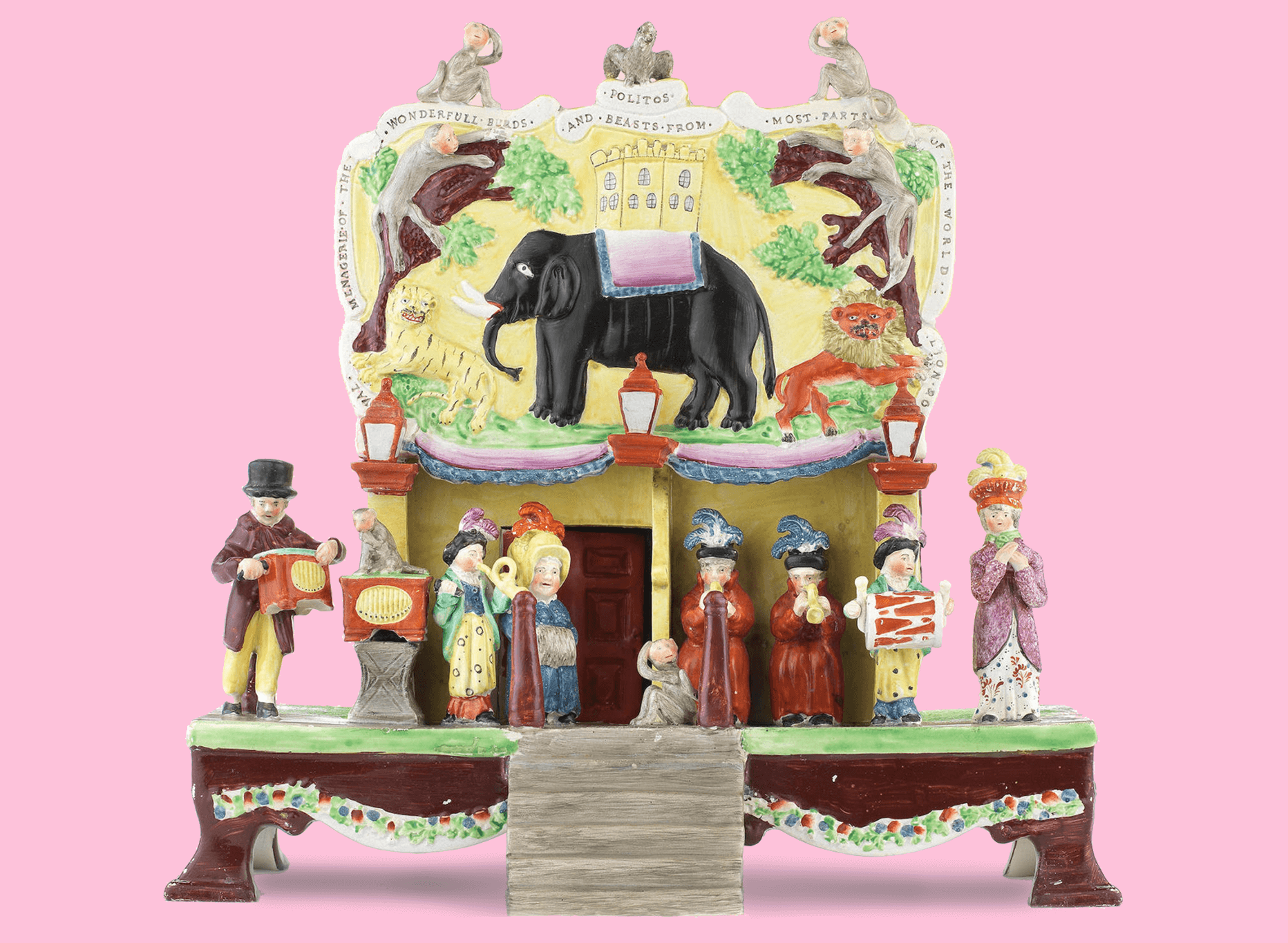Sand and Beesums
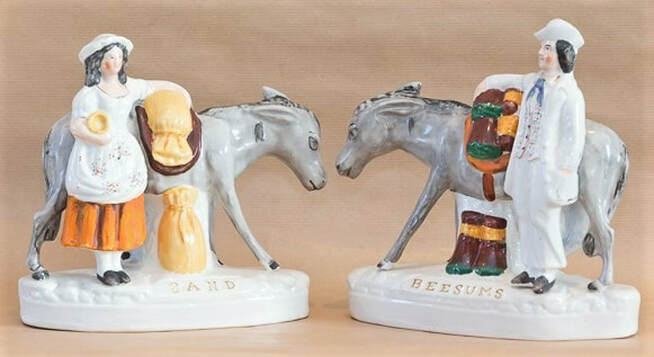

The Victorian potter was good at making models of all kinds… royalty, politicians, criminals and animals, and also models depicting scenes of every day life. The figures entitled “Sand” and “Beesums” are just such models and show travelling salespeople who would probably go from town to town and village to village selling sand and beesums to the peasant or worker’s wife. Nearly all houses in Victorian times would have had hard floors of either earth, stone flags or wood. These floors may have been dressed with sawdust or straw. The floors got very dirty and soiled so the housewife would have scattered sand on the grimy surface to help abrase the dirt and then bush it away with a broom called a beesum.


More Figures of the month
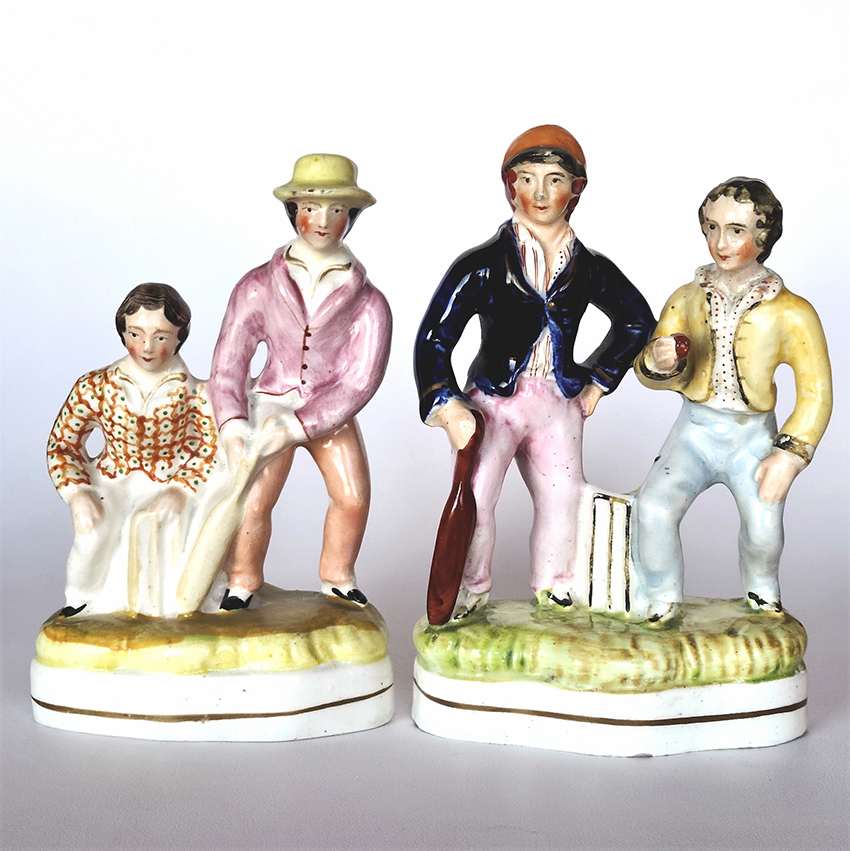

Boys playing cricket
This is a pair of Staffordshire figures of unidentified boys playing cricket, standing 6 ½” and 6 ¾” tall, dating to around 1850.
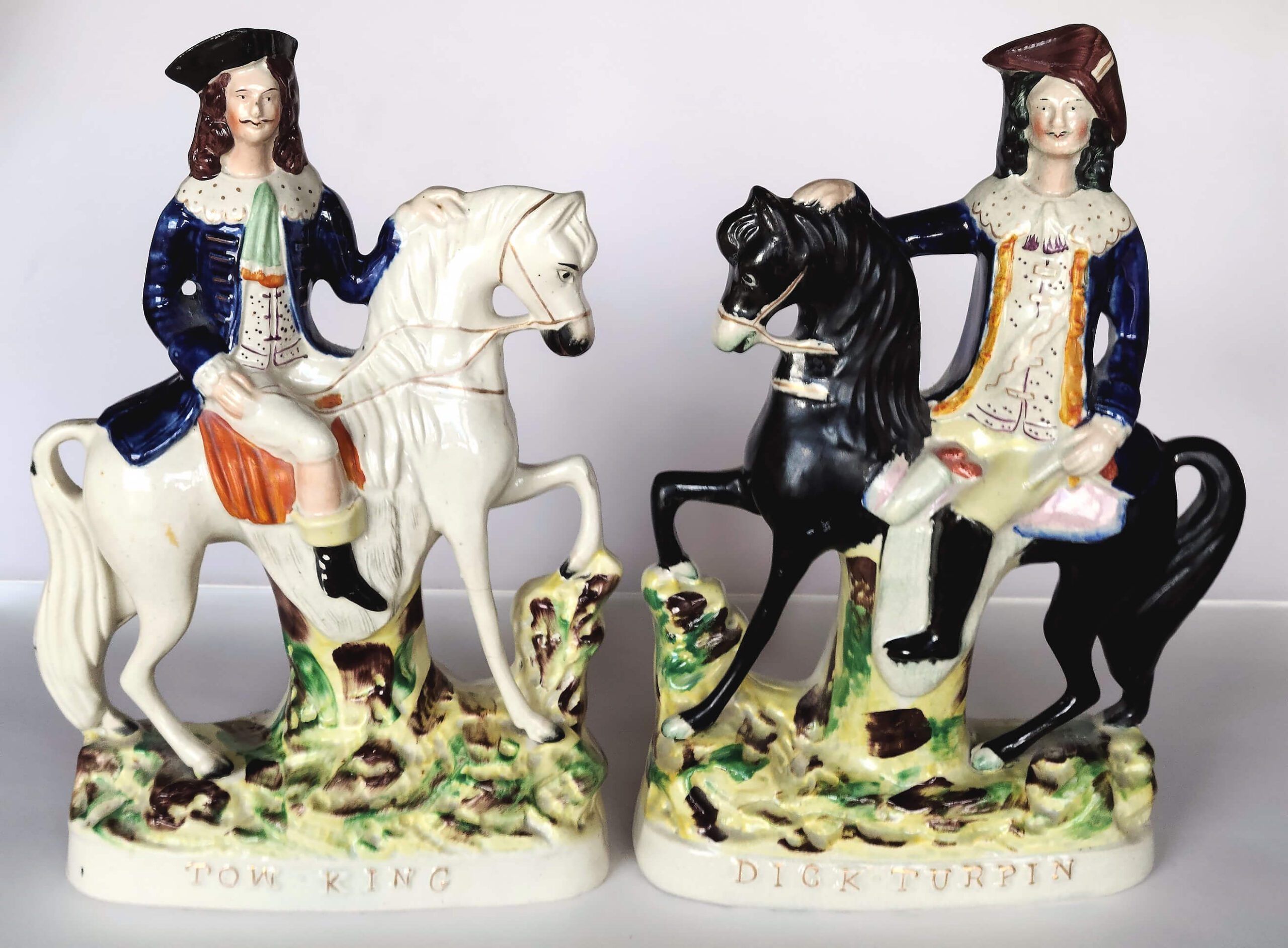

Tom King and Dick Turpin
This is a fine pair of Staffordshire figures of Tom King and Dick Turpin, probably originating from a theatrical production. Note the four separately moulded legs on each horse.
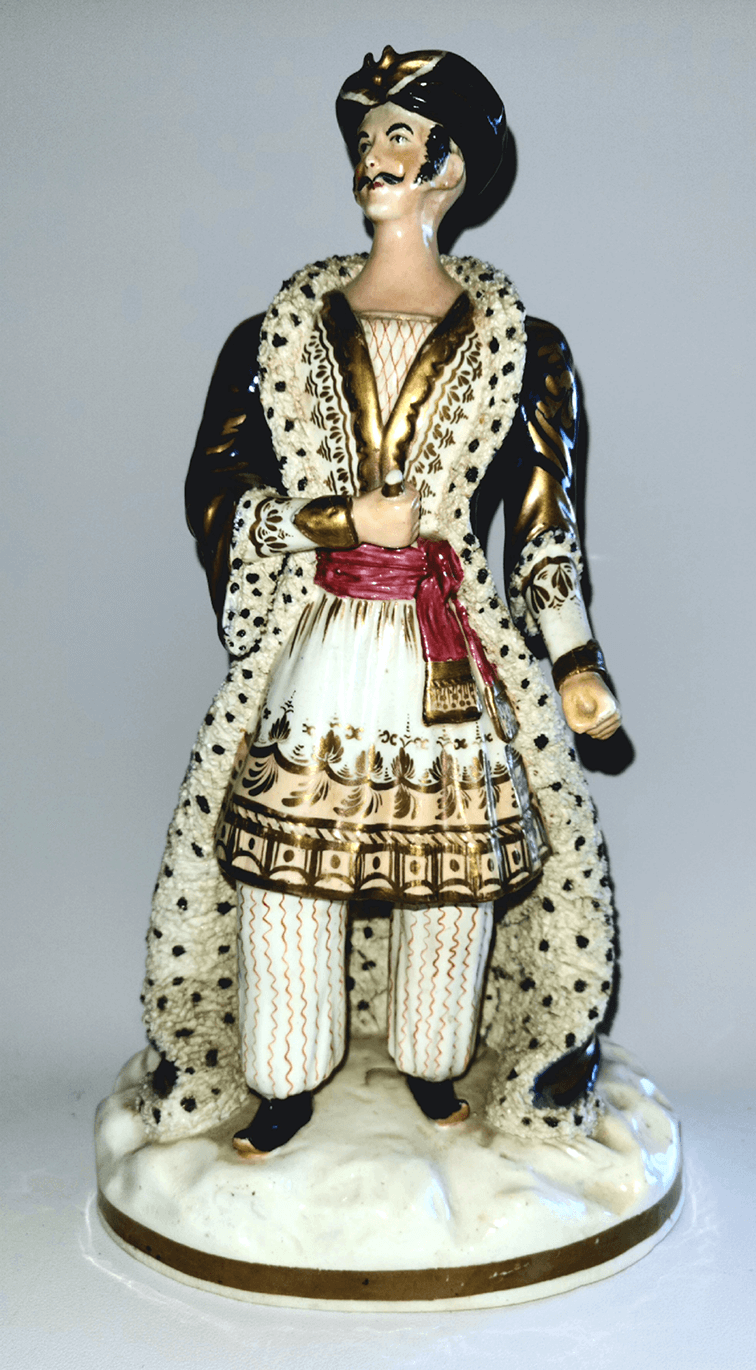

Artabanes
This is a theatrical figure representing an actor in the role of Artabanes, from the opera Artaxerxes. The figure stands 11 3/4” tall, dates to approximately 1830-1840, and is very rare. There is a dagger in his right hand, part of the blade being hidden beneath his sash. The interior and the edging of his coat are fully lined with ermine.
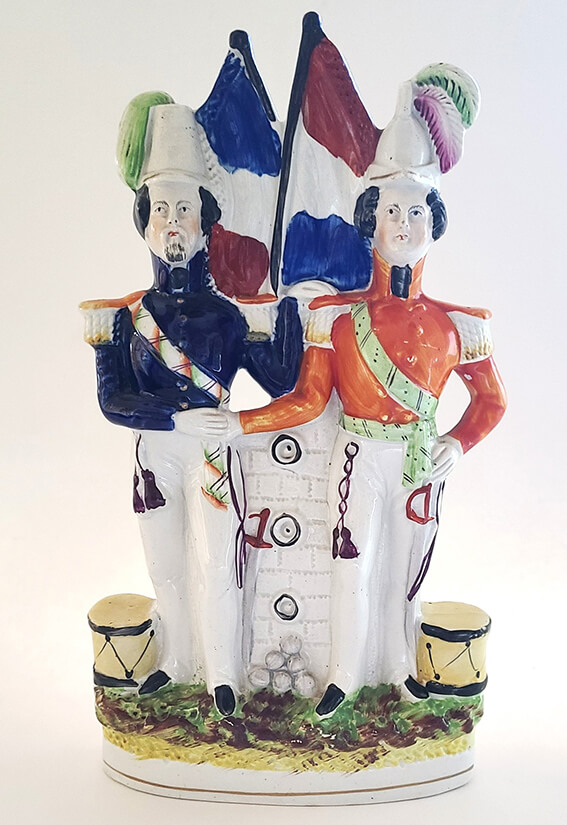

Napoleon III with Prince Albert
This is a figure of Napoleon III with Prince Albert, each with a drum on the ground and to the side. The figure stands 10 ¾” and dates to about 1854.
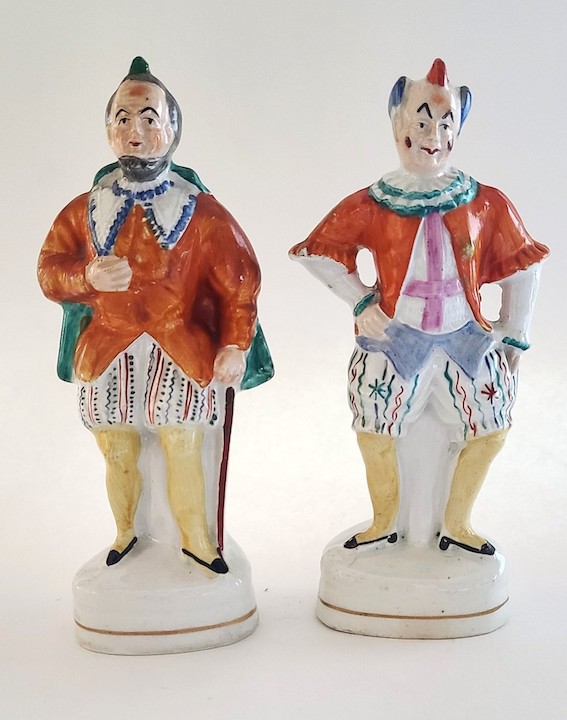

A pair of clowns
This is a fine pair of Staffordshire clowns, both standing 6 ½” tall, dating to circa 1860. Each is wearing pantaloons, with the figure on the left holding a cane.
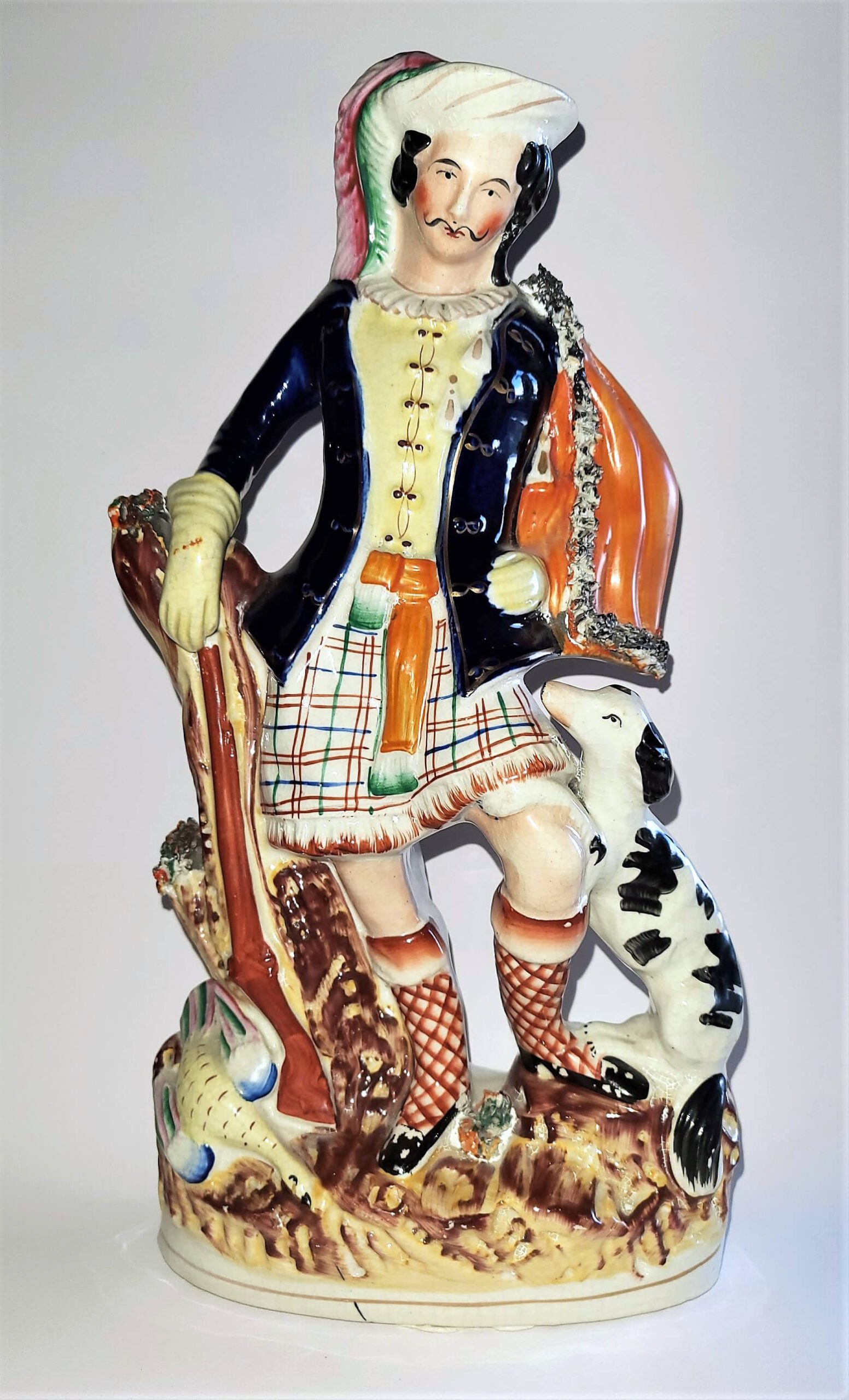

Scottish hunter
This is an interesting example of a Scottish hunter, wearing kilt and underglaze blue coat, with a dog at his knee and a rifle resting near his right hand. The figure stands 14 ¼” tall and dates to about 1860.


